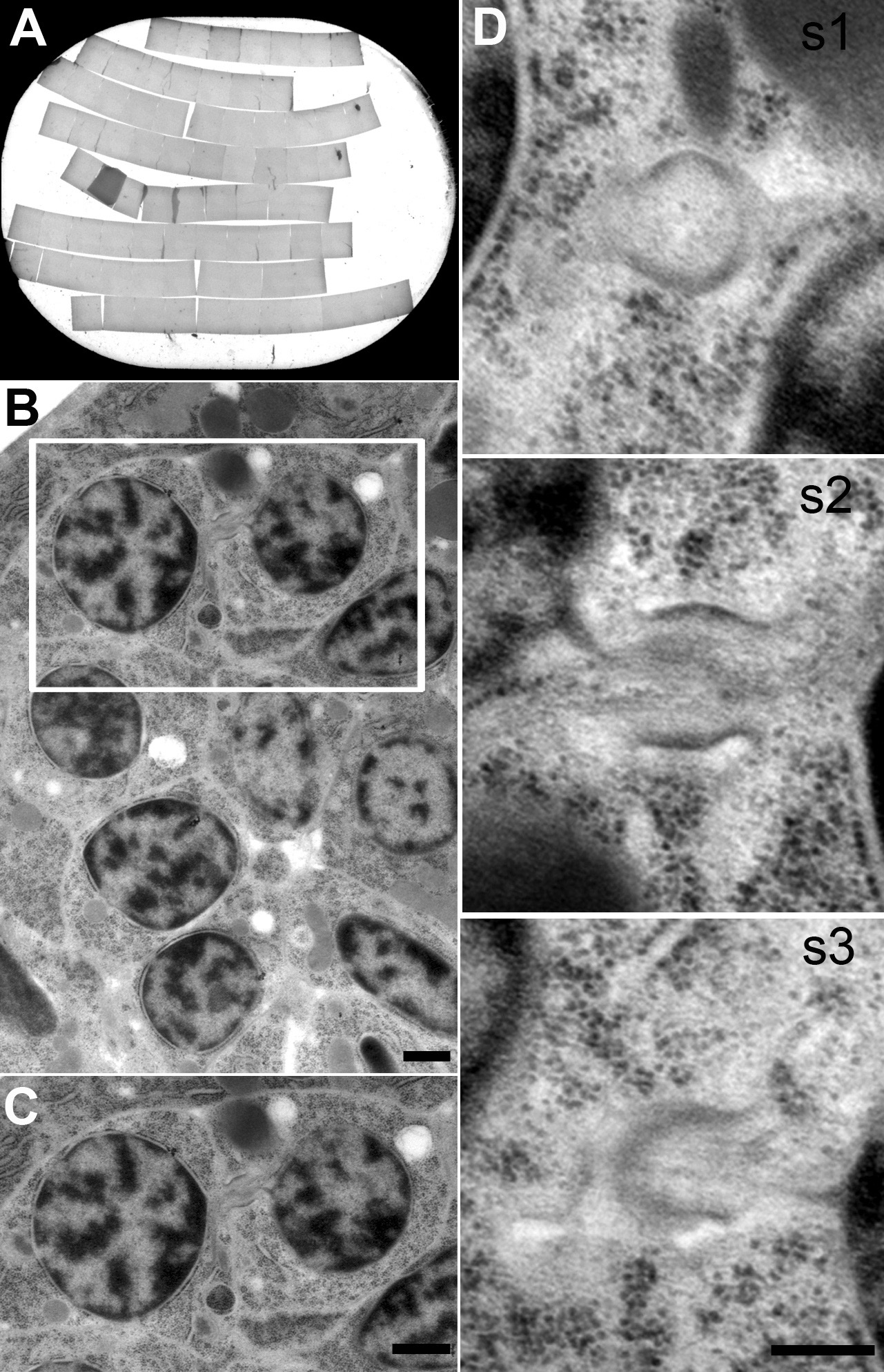Electron microscopy is a tool that is extensively used in C. elegans studies. However, some questions are difficult to address by commonly available methods, since they require a tedious search for an elusive feature. Such difficulty is evident when embryonic stages are considered, as tiny embryos are difficult to manipulate. In addition, identity of the cells and their appearance will highly depend on sectioning orientation that is hard to master under the ultramicrotome. An EM procedure that involves flat embedding and tight trimming can facilitate the search for the desired feature (Kolotuev, 2014). In this procedure samples are embedded in resin that after polymerization remains easy to observe under the microscope. This way samples can be selected and oriented according to the project needs. Tight trimming of the samples permits to concentrate on precise region of interest, significantly reducing working effort.One example that requires such approach is the study of cell division. C. elegans early embryo provided important information on mechanisms of cell division that are valid also in additional systems. On light microscopy level abscission process was demonstrated to be a multistep internalization process involving ESCRT complex components and Septins (Green et al., 2013). Nevertheless, the appearance of abscission site and intermediates of abscission on TEM level are not yet known. The difficulty might be explained by the fact that the process is transitory and happens inside the large embryo making it difficult to find.
Using flat embedding-tight trimming procedures numerous sections were mounted on one grid, which enabled a convenient screen for the midbody in ball stage embryos (Figures 1A and 1B). The midbody at the end of cell division lacks microtubuli or Fleming body and does not resemble the cytokinetic bridge of cells in culture (Figures 1C and 1D). These reference images for the first time give a description of cytokinetic features on TEM level and might facilitate further studies and characterization of abscission processes in C. elegans. The same strategy can be applied in the search for other rare cellular events or separate cells localization related to precise time point (such as anchor cell fusion, ventral enclosure), improving the success rate of their localization.
Figures

A. A holy TEM grid with over forty two serially collected sections. Scale bar 100 µm.
B. Low magnification image of dividing cells. Scale bar 500 nm.
C. Higher magnification on the inset from panel B. Scale bar 500 nm.
D. Three serial sections of embryonic midbody cytokinetic bridge that still connects two cells. Scale bar 200 nm.
References
Green RA, Mayers JR, Wang S, Lewellyn L, Desai A, Audhya A, Oegema K. (2013). The midbody ring scaffolds the abscission machinery in the absence of midbody microtubules. J. Cell Biol. 203, 505-520. 
Kolotuev I. (2014). Positional correlative anatomy of invertebrate models organisms increases efficiency of TEM data production. Microscopy and Microanalysis, 20, 1392-1403. 